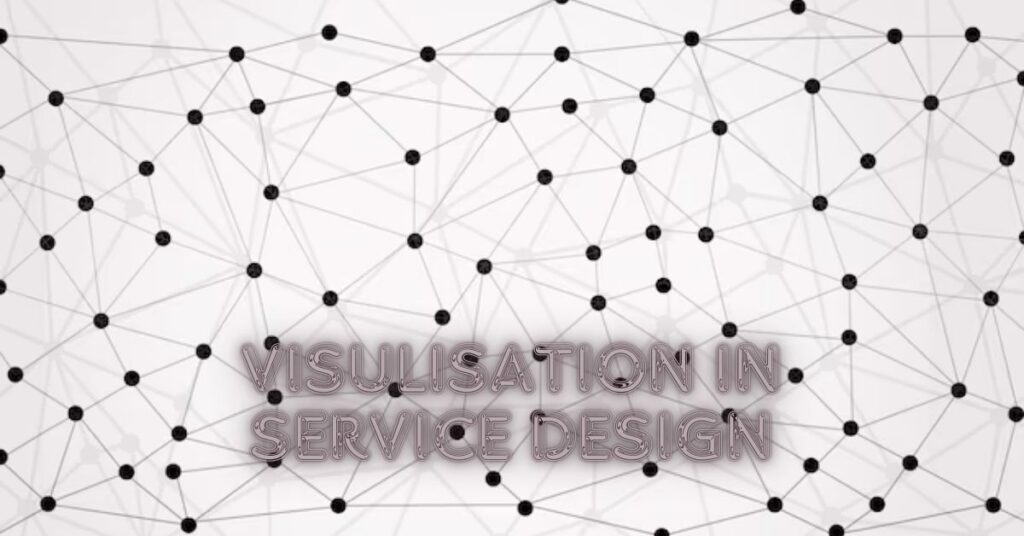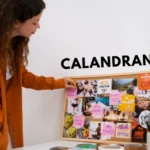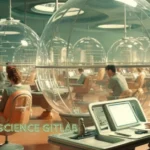introduction
Imagine walking into a perfectly visulisation in service design environment where every interaction feels seamless and intuitive. This is not just luck; it’s the power of visualization in service design at work. As companies strive to create exceptional customer experiences, the role of visuals has never been more critical. From mapping out user journeys to crafting immersive environments, effective visualization can transform how services are delivered and experienced.
In today’s fast-paced world, customers have high expectations. They demand clarity, efficiency, and engagement at every touchpoint. That’s where visual tools come into play—they help teams step back from their processes and see things from a different angle. By bringing abstract ideas to life through diagrams, sketches, or digital models, organizations can better understand both their visulisation in service design and the people who use them.
Join us as we explore how harnessing the power of visualization elevates service design efforts across industries. Let’s dive deep into its significance for creating remarkable customer interactions that leave lasting impressions!
Understanding Service Design
Service design is a multi-disciplinary approach focused on improving the quality and efficiency of services. It combines elements from various fields, including psychology, marketing, and technology, to create experiences that resonate with users.
At its core, service design emphasizes empathy. Understanding the needs and behaviors of customers is essential for crafting meaningful interactions. This requires mapping out customer journeys and identifying pain points along the way.
Moreover, service design isn’t solely about aesthetics; it’s about functionality too. Each component—whether it’s a digital interface or an in-person touchpoint—must work harmoniously together.
Collaboration plays a vital role in this process as well. Engaging stakeholders throughout can lead to innovative solutions that might not arise within isolated teams. This holistic approach ensures services are tailored to meet real user needs while aligning with business goals effectively.
The Importance of Visuals in Service Design
visulisation in service design play a crucial role in service design. They transform complex ideas into understandable concepts. By utilizing images, diagrams, and infographics, designers create clarity.
When teams collaborate on projects, visuals act as a common language. Everyone can engage without misinterpretation. This fosters creativity and innovation while minimizing confusion.
Moreover, visuals help stakeholders see the bigger picture. They illustrate customer journeys and touchpoints effectively. This understanding leads to better decision-making.
Customers also benefit from visual elements in service design. Clear graphics simplify their experience and enhance usability. Engaging visuals invite users to interact with services more comfortably.
Incorporating strong visuals is not just about aesthetics; it’s about improving communication across all levels of service design.
How Visualization Enhances the Customer Experience
visulisation in service design plays a pivotal role in transforming the customer experience. By presenting complex data and services visually, businesses make information easier to digest. Customers can quickly grasp offerings without sifting through dense text.
Effective visuals guide users through their journey. Infographics and flowcharts illustrate processes clearly, reducing confusion. This clarity fosters trust; customers feel more informed about what to expect.
Additionally, emotional connections are strengthened through storytelling techniques in visualization. Engaging graphics evoke feelings that resonate with audiences, making them more inclined to engage further with the service.
Visual elements also enhance usability across digital platforms. Well-designed interfaces draw attention to key actions or features, streamlining interactions for a smoother user experience.
When customers see their needs reflected visually, they’re more likely to form lasting relationships with brands that prioritize their comfort and understanding throughout the service design process.
Case Studies of Successful Implementation of Visualization in Service Design
One notable case study is that of a leading healthcare provider, which revamped its patient journey using visulisation in service design techniques. By mapping out the entire process from appointment scheduling to post-visit follow-ups, they identified pain points and streamlined operations. This resulted in reduced wait times and improved patient satisfaction.
Another example comes from a global airline that employed visual service blueprints to enhance their customer experience. These blueprints illustrated every touchpoint between staff and passengers, allowing them to pinpoint inefficiencies. The airline reported increased boarding efficiency and higher passenger ratings after implementing these changes.
A tech startup also found success by utilizing storyboards during their design sprint sessions. They captured user scenarios visually, which sparked rich discussions about possible solutions among team members. The clarity gained through visualization led to innovative ideas that significantly enhanced their product offerings.
Tools and Techniques for Effective Visualization in Service Design
When it comes to visulisation in service design, the right tools can make all the difference. Digital platforms like Miro and Figma offer collaborative spaces for teams to brainstorm and create visual representations of their ideas.
Storyboarding is another powerful technique. It helps map out customer journeys through a narrative format, making complex processes easier to understand.
Mind maps are also effective for organizing thoughts visually, allowing team members to see connections between different elements of service delivery.
Prototyping tools such as Sketch or Adobe XD enable designers to visualize interactions before they go live. These early models help identify potential issues down the line.
Infographics can distill large amounts of data into digestible visuals that resonate with stakeholders immediately. Each tool has its strengths and plays a vital role in enhancing clarity during the design process.
Tips for Utilizing Visulisation to Improve Service Design
To effectively utilize visulisation in service design, start by clearly defining your objectives. Know what you want to achieve with your visual elements. This focus will guide the process.
Engage stakeholders early on. Involve team members and users in brainstorming sessions to gather diverse insights. Their input can lead to more meaningful visuals.
Use simple graphics that tell a story. Complex images may overwhelm instead of clarify. Aim for clarity and ease of understanding.
Experiment with different formats like journey maps or infographics. These tools can distill complex processes into digestible visuals, enhancing comprehension.
Iterate based on feedback from users and colleagues alike. Refinement is key; it ensures that your visuals resonate well with the intended audience.
Incorporate technology where applicable—consider using digital platforms for interactive experiences that captivate users while conveying essential information.
Challenges and Limitations of Using Visulisation in Service Design
visulisation in service design offers tremendous potential, yet it comes with challenges. One major hurdle is the diversity of stakeholders involved. Different perspectives can lead to conflicting interpretations of visual representations.
Additionally, there’s often a gap between concept and reality. While a visualization may look appealing on paper or screen, translating that into an effective service experience requires meticulous planning and execution.
Another limitation lies in resource allocation. High-quality visuals demand time and investment that not all teams can afford. This can restrict creativity and the depth of exploration.
Moreover, over-reliance on visuals might overshadow critical thinking processes. Teams could become more fixated on making images attractive rather than focusing on underlying user needs.
Cultural differences play a role too; what resonates visually with one demographic may not have the same impact elsewhere. These nuances must be considered carefully to avoid miscommunication or misunderstandings.
Future Directions and Innovations in Visualizing Service Design
The future of visulisation in service design is poised for exciting transformations. As technology evolves, so too do the tools available to designers. Virtual reality (VR) and augmented reality (AR) are becoming integral in creating immersive experiences that allow stakeholders to interact with services like never before.
Artificial intelligence (AI) also plays a crucial role. By analyzing customer data, AI can help generate personalized visualizations that cater specifically to user needs and preferences. This could lead to more targeted service improvements.
Moreover, collaborative platforms will enable teams from diverse backgrounds to co-create visuals efficiently. The integration of real-time feedback loops ensures ongoing refinement based on actual user interactions.
As sustainability gains importance, eco-friendly visualization methods are emerging as well. Designers will increasingly focus on minimizing waste while maximizing impact through thoughtful representation of services and their benefits.
Conclusion
The role of visulisation in service design cannot be overstated. It transforms abstract concepts into tangible experiences, enabling designers to communicate ideas more effectively. By harnessing visuals, teams can foster collaboration and creativity while enhancing the overall customer experience.
As we’ve explored, successful case studies highlight the profound impact that effective visualization can have on service delivery. Whether through journey maps or interactive prototypes, these tools help identify pain points and opportunities for improvement.
While challenges exist—such as resistance from stakeholders or limitations in skillsets—the benefits of employing visualization techniques far outweigh these hurdles. The future promises exciting innovations in this space, with technology continually evolving to offer new possibilities for visual representation.
Utilizing visualization is not just a trend; it’s an essential practice that shapes how services are designed and delivered. Embracing this approach will undoubtedly lead organizations toward more user-centered solutions, ensuring they meet the needs of their customers now and in the future.
FAQs
What is “visulisation in service design”?
Visualization in service design involves using visual tools—such as diagrams, sketches, and digital models—to represent and understand complex service processes. It helps teams see the entire service experience from different perspectives, facilitating clearer communication, identifying pain points, and fostering innovation. This approach transforms abstract ideas into tangible concepts, making it easier to design effective and user-friendly services.
How do visuals enhance the customer experience in service design?
Visuals enhance the customer experience by making complex information more digestible and accessible. Through clear graphics and infographics, businesses can guide users through their journey, reducing confusion and building trust. Emotional connections are also strengthened through engaging storytelling techniques, which make the service experience more relatable and memorable.
What are some effective tools for creating visualizations in service design?
Effective tools for creating visualizations include digital platforms like Miro and Figma for collaborative design, storyboarding for mapping customer journeys, and prototyping tools like Sketch or Adobe XD for interaction design. Infographics and mind maps also help in organizing and presenting information clearly.
What challenges might teams face when using visualization in service design?
Teams may face challenges such as diverse stakeholder perspectives leading to conflicting interpretations, the gap between conceptual visuals and practical implementation, and resource constraints limiting the depth of visual exploration. Over-reliance on aesthetics rather than functionality and cultural differences in visual impact can also pose issues.
What are future trends in visualization for service design?
Future trends in visualization include the integration of virtual reality (VR) and augmented reality (AR) for immersive experiences, the use of artificial intelligence (AI) to create personalized visualizations based on user data, and the development of eco-friendly visualization methods. These innovations promise to enhance collaboration, personalization, and sustainability in service design.







